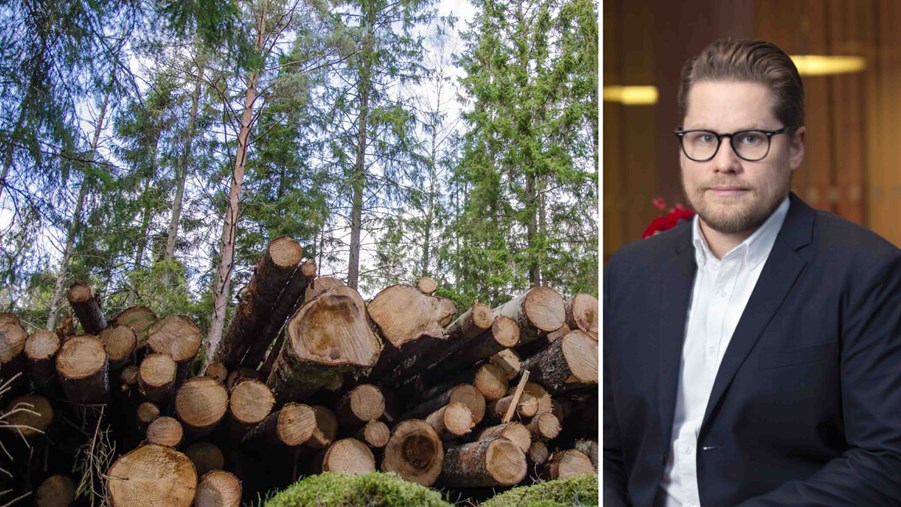
Growth rates in Swedish forests will have to increase to meet carbon sequestration targets under the EU’s LULUCF Regulation, according to an impact assessment of the climate effects of forest management measures conducted by the Swedish Forestry Agency (SFA). However, reducing harvesting rates by 10 per cent would be unrealistic, ineffective, and would have severe economic and societal impacts in terms of job losses and export revenue, argues Mårten Larsson, Manager Forest and Bioenergy at Swedish Forest Industries (SFIF).
The SFA recently presented an analysis of several specific measures designed to increase the carbon sink in Swedish forests. The measures could increase the size of the carbon sink by between 2 and 10 million tonnes of carbon dioxide a year. They include:
– Reduced harvesting rates. If harvesting rates were reduced to 90 per cent of today’s levels, the carbon sink would increase by less than 10 million tonnes of carbon dioxide a year to 2100.
– Halving game grazing damage, where elk and deer graze in growing forest, could result in increasing the carbon sink by roughly 5 million tonnes of carbon dioxide a year to 2100.
– Increasing the area of nitrogen fertilization to 150,000 hectares a year (4.5 times more than today, primarily in northern Sweden) could increase the carbon sink by approximately 2 million tonnes of carbon dioxide a year to 2100.
– Doubling the size of nature conservation areas, where forest is excluded from production, does not contribute to increased carbon sink effects if today’s felling volumes were to be maintained in cultivated forest, the research shows.
Unrealistic to significantly reduce harvesting rates
“A 10 per cent reduction in harvesting rates would have severe economic and societal impacts. At least SEK 20 billion in exports and 12,000 jobs, mainly in smaller towns, would disappear,” Larsson says.
“At the same time, the net effect of the climate benefit decreases as a result of the substitution of fossil products decreasing by around 5 million tonnes of carbon dioxide a year and the carbon sink in long-lived wood products by around 1 million tonnes a year.”
There is also a significant risk that all or part of the carbon sink will be cancelled out as felling increases in other countries. Demand exists for fossil-free forest products, but a reduction in the supply of forest raw materials increases the risk that the use of fossil raw materials will increase.
Reduced game grazing and fertilization rapidly increases growth
“Damage caused by game grazing results in significant reductions in tree growth and quality. The forest management sector estimates that game grazing reduces carbon uptake by 12 million tonnes of carbon dioxide a year. This can be compared to emissions from domestic Swedish road traffic of around 14 million tonnes in 2022. If grazing damage is reduced, growth can increase, which makes game management a highly effective climate tool,” says Larsson.
Nitrogen fertilization is another measure that is effective for the climate and the economy. Substantial opportunities exist to fertilize forest land without having negative effects on the environment in general. Fertilization leads to a rapid increase in carbon sequestration and is extremely cost-effective. In addition, it increases the availability of raw materials that can be used to replace fossil materials and products.
Nature conservation areas are not a climate measure
Doubling nature conservation areas, in line with the Commission’s original proposal for a nature restoration regulation, may not result in an increased carbon sink even in the short term.
“The size of the carbon sink decreases in the longer term as growth in mature forest slows. Setting aside forest land is a measure to promote biodiversity. The reinforcement effect that is sometimes talked about – the argument that nature conservation areas benefit climate and biodiversity – does not stack up. Rather, a conflict between aims arises between using the forest for the climate and leaving the forest unused to benefit certain species,” says Larsson.
“The SFA impact assessment shows that we need to develop a selection of measures that establish a long-term sustainable balance between different goals and interests,” he adds.

